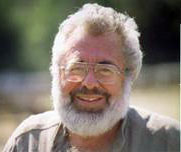
Shades for Passive Solar
 Ken Haggard, formerly an architecture professor at California Polytechnic, is an architect and principal in the San Luis Sustainability Group. Since the late sixties, Ken has designed more than 200 solar buildings, from homes to large commercial and institutional buildings—as well as the first permitted straw bale building in California. An active member of the American and International Solar Energy Societies, he received the Passive Pioneer Award from ASES in 1999 and was made a fellow of ASES in 2000. His office and home—in Santa Margarita, California—are passive solar, off grid, and straw bale. With David Bainbridge, Ken wrote Passive Solar Architecture: Heating, Cooling, Ventilation, Daylighting and More Using Natural Flows, published by Chelsea Green in 2011.
Ken Haggard, formerly an architecture professor at California Polytechnic, is an architect and principal in the San Luis Sustainability Group. Since the late sixties, Ken has designed more than 200 solar buildings, from homes to large commercial and institutional buildings—as well as the first permitted straw bale building in California. An active member of the American and International Solar Energy Societies, he received the Passive Pioneer Award from ASES in 1999 and was made a fellow of ASES in 2000. His office and home—in Santa Margarita, California—are passive solar, off grid, and straw bale. With David Bainbridge, Ken wrote Passive Solar Architecture: Heating, Cooling, Ventilation, Daylighting and More Using Natural Flows, published by Chelsea Green in 2011.
Questions and Answers
Q: I live in Canada and am planning on building a new 'green home'. I would like to get some basic information on calculating the orientation and roof overhang dimensions based on the suns location at the different times of year. Can you direct me to an article or publication that outlines the process. Where can I get data on the suns location for my latitude?
A: (Daniel Chiras) You might want to obtain a copy of my newest book: The Solar House: Passive Heating and Cooling . It will help you determine the best orientation for your house and overhang. Page 107 in specific describes how you need to calculate the overhang.
Q: We have a south-facing bi-level ranch in Golden. We have had installed solar thermal for DHW for some 20 years and it works very well. However, our north/west facing side has considerable wind chill, making an upper level bedroom very cold in winter from wind chill. Do you know of anything that can be done to mitigate this?
A: (Kelly) Dealing with the cold coming in from that side would best be addressed by minimizing any cracks or places of air infiltration, placing insulating curtains on any windows, and possibly increasing the insulation (preferably on the exterior) on the walls and ceiling of that area.
Q: Do you have written instructions on your website on how to make the roller shades?
A: (Daniel Chiras) No, I don't have instructions for this up on my website. Basically, it just takes 3 pulleys and a bunch of rope that loops on both sides of the shade from the back at the top, down and around the tube that the shade is attached to at the bottom, and then back up the front of the shade and through the pulleys mounted at the top of the shade near where the cord is attached on the back. The reason you need a third pulley is so that you can direct both of the cords off to one side (the cord from the far side gets put through the third pulley attached next to the the one on the other side.) Then the two cords are tied together so that they hold the shade partially rolled up and make it easy to just pull the cords together to roll up the shade...like magic!


